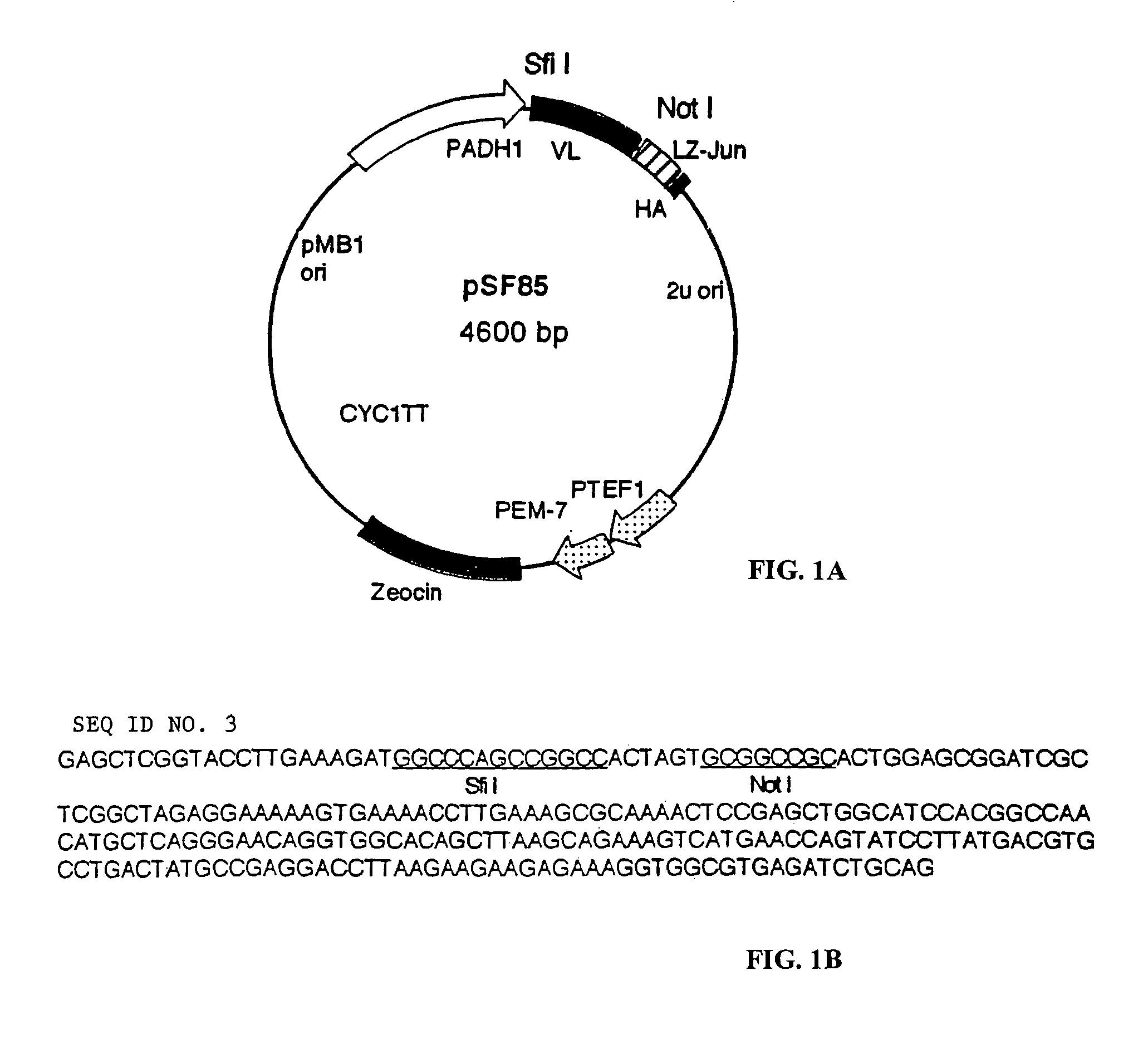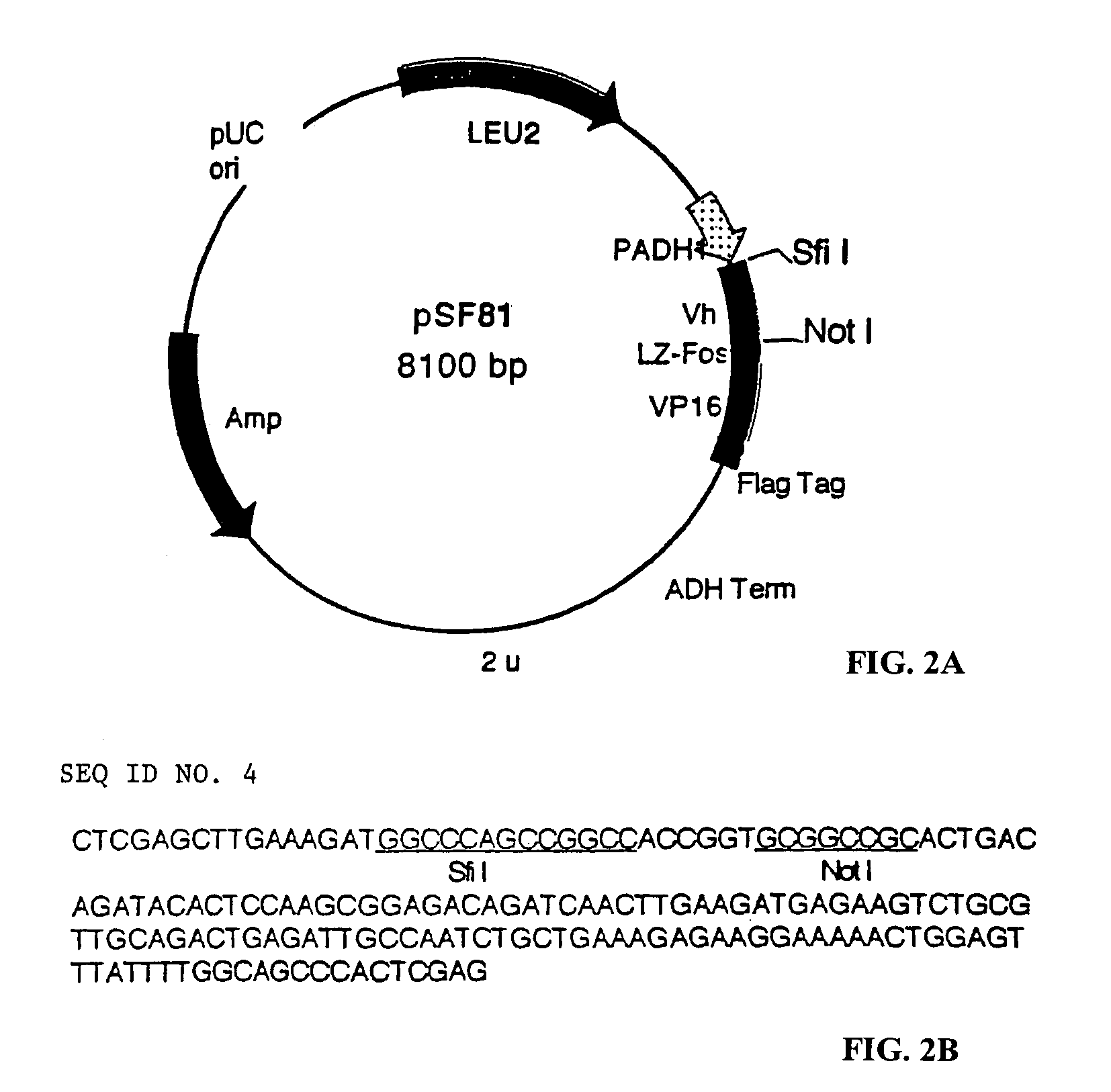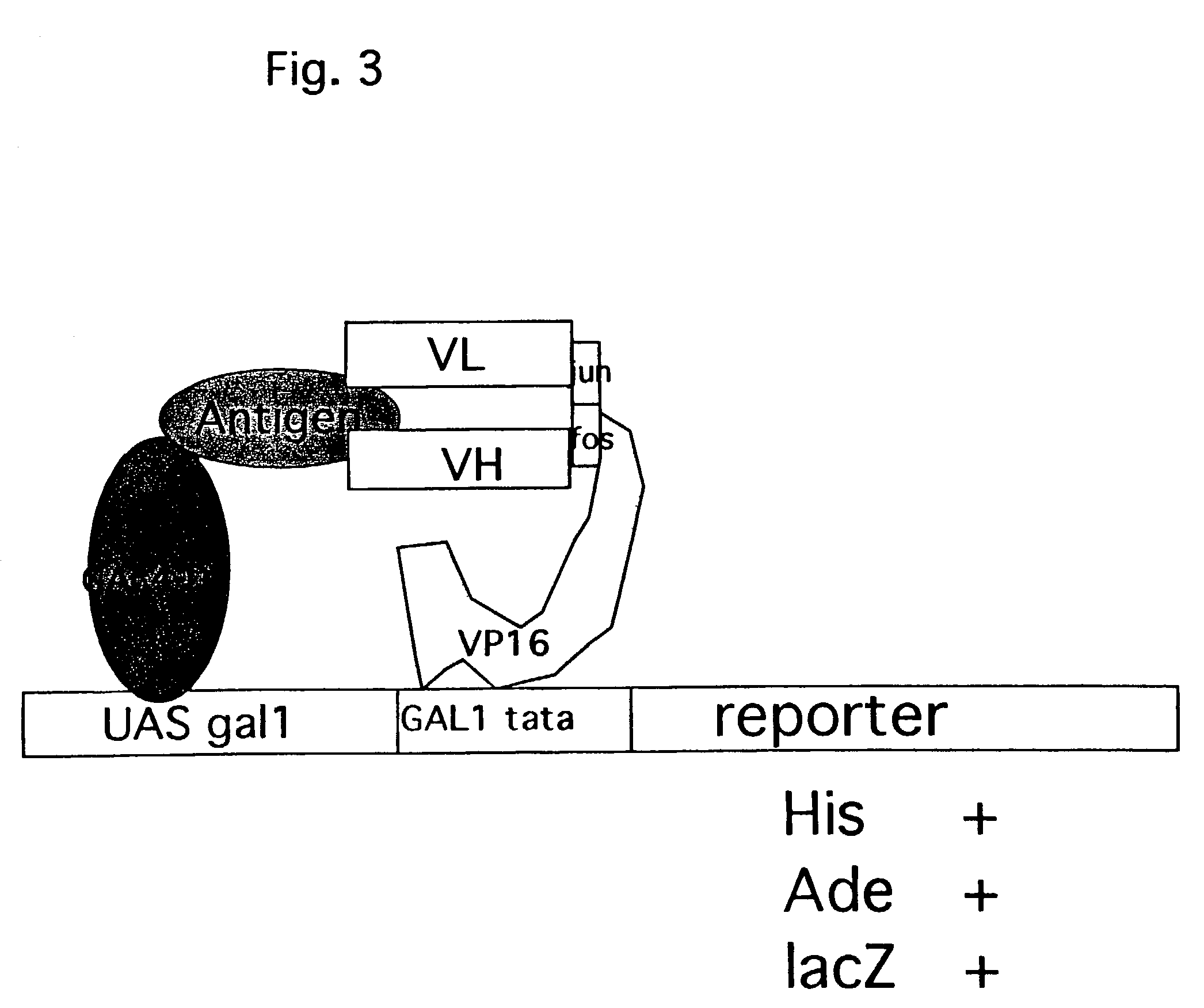Compositions and methods for generating antigen-binding units
- Summary
- Abstract
- Description
- Claims
- Application Information
AI Technical Summary
Benefits of technology
Problems solved by technology
Method used
Image
Examples
example 1
Functional Dimerization of Vh / Vl of Anti-Ras Antibody Y238 through Leucine Zipper Motif of Fos / Jun Protein in Yeast Cells, and Detection of Their Interaction with Ras Protein Antigen in an Improved and Modified Yeast Two Hybrid System
a) Construction of Three-Vector System for Simultaneously Expressing Antigen, the Pairs of the Antibody Molecules in a Yeast / E. coli Shuttle Vectors
[0146]Construction of pSF83 (pGa14DB-Ras)—PCR primers Ncras and Noras3, with the following sequence: ATGGCCATGGTCACAGAATACAAGCTTGTGGT (SEQ ID NO. 1), and TAAGAATGCGGCCGCTCAGGACAGCACACATTTGC (SEQ ID NO. 2) respectively, were used to PCR amplification of ras oncogene from cDNA library. The PCR reaction was carried out under the following conditions: denaturing at 94 Co for 30″, annealing at 55 for 30″, 72 for 60″ for 28 cycles with Pfu polymerase (Roche Molecular Biochemicals). The PCR product was purified, and digested with Nco I and Not I, that were incorporated into the primers Ncras and Noras3 respectively...
example 2
Generation of Combinatorial Genetically Diverse Repertoire of Antigen Binding Fragments Through Dimerization of the Pairs of Antigen Binding Fragments
[0152]Production of V domains of different specificities creates the ability for a mammal to respond to diverse antigen. The V domains are derived from many potential germ line sequences via a complex process involving recombination, mutation and selection.
[0153]PCR amplification of VH and construction VH-LZ-VP16 hybrid expression library and of VL and construction of VL-LZ library: to optimize the coverage of the diversity of the antibody genes, we take the advantage of the recent completion of human genome sequence and the catalogue of all the functional germline V genes in the database. The design of the primer pairs therefore are aimed at recognizing all the genes, or as many as possible. First, the V gene encoding the CDR1 and CDR2 from both germline or rearranged mRNA is PCR amplified using primers corresponding to the leader seq...
example 3
Screening Antigen Binding Fragment from Above Said Libraries
[0154]The process typically involves the following steps: (a) constructing plasmid expressing antigen fused with DNA binding domain: cDNA library or desired antigen protein can be fused with DNA binding domain such as Ga14 DNA binding domain in cloning vector such as pGBKT7; and (b) preparing yeast cells transformed with above expression vectors or libraries.
[0155]Competent yeast cells AH109 are prepared and co-transformed with plasmid expressing Ga14-antigen fusion in vector pGBKT7 and the above said VL-LZ library in pSF86 by Li-Ac methods as described (Geitz et al., 1992. Nucleic Acids Res. 20:1425), and selected on yeast drop-out media for growth in the absence of tryptophan, and presence of antibiotics zeocin at concentration 50 ug / ml. The AH109 transformed with above two plasmids expressing the antigen and VL-LZ fusion was mated with yeast cells of opposite mating type, Y187, that is transformed with library expressing...
PUM
| Property | Measurement | Unit |
|---|---|---|
| Interaction | aaaaa | aaaaa |
Abstract
Description
Claims
Application Information
 Login to view more
Login to view more - R&D Engineer
- R&D Manager
- IP Professional
- Industry Leading Data Capabilities
- Powerful AI technology
- Patent DNA Extraction
Browse by: Latest US Patents, China's latest patents, Technical Efficacy Thesaurus, Application Domain, Technology Topic.
© 2024 PatSnap. All rights reserved.Legal|Privacy policy|Modern Slavery Act Transparency Statement|Sitemap



